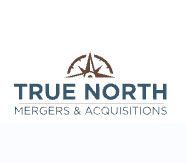Sell-Side Quality of Earnings Report: A Guide for Business Owners

True North Mergers & Acquisitions
August 7, 2025

A QoE report is a deep, independent analysis of your company's financial performance, especially your EBITDA (Earnings Before Interest, Taxes, Depreciation, and Amortization). It adjusts for nonrecurring expenses, owner-related costs, and accounting inconsistencies to reveal your business's actual earnings.
Institutional buyers (strategic acquirers, private equity firms, and family offices) typically require a third-party buy-side QoE report on all lower middle market transactions as part of their due diligence process. In recent years, it has become increasingly popular for sellers of lower-middle-market companies to engage a reputable CPA to complete a sell-side QoE report. Not having one can put you at a distinct disadvantage.
A buy-side QoE is conducted for the benefit of the buyer and is performed post-LOI and pre-closing. Its purpose is to help ensure that the buyer has accurate information about the business and to prevent misunderstandings regarding its actual condition.
A sell-side QoE is conducted for the seller's benefit and is performed before listing on the market. The primary purpose and benefits of a sell-side QoE in this context include:
Increase Buyer Confidence and Speed Up Due Diligence
A professionally prepared QoE report gives buyers confidence in the financial integrity of the business. It can accelerate the due diligence process by reducing surprises and minimizing a buyer's need for extensive verification.
Strengthen Valuation Justification
A QoE report helps normalize EBITDA by adjusting for one-time or nonrecurring expenses or income, owner perks or discretionary spending, and accounting anomalies. These adjustments support a higher and more defensible valuation.
Uncover and Address Issues Early
A QoE report identifies financial inconsistencies, poor accounting practices, or red flags before buyers find them. It provides an opportunity for the seller to correct or explain issues proactively, preserving deal momentum.
Control the Narrative
A QoE report enables the seller to present information proactively (rather than responding to the buyer's assessment of financial statements) and can address potential assumptions and clarify expectations.
Enhance Negotiating Power
By presenting credible, third-party financial information, the seller is in a better position to negotiate terms, push for higher multiples, and/or support a more favorable transaction structure.
Broaden the Pool of Buyers
This is especially important when marketing to institutional buyers (strategic acquirers, private equity firms, and family offices) who expect professional diligence.
Reduce the Risk of Retrading
Deals often fall apart or get repriced (re-traded) when the buyer's QoE uncovers unexpected issues. A sell-side QoE can help minimize price reductions late in the process.
Demonstrate Seriousness and Professionalism
A seller’s decision to initiate a QoE at the start of the sales process signals to buyers that the seller is prepared, transparent, and committed to a fair and efficient transaction. Professionalism tends to attract better buyers and more favorable offers.
In summary, a sell-side QoE report tends to draw better buyers in greater numbers, resulting in higher prices and better terms for the seller. As a result, they are nearly always well worth the cost.
A QoE for lower middle market companies usually ranges from $25,000 to over $75,000, with costs varying by complexity, workload, and firm size—national firms typically charge more than local or regional ones.
I advise clients to view a sell-side QoE as an investment. For example, with $25 million in annual sales and $5 million in EBITDA, increasing the EBITDA multiple from 5 to 6 (often, a very real result) can raise the sale price from $25 million to $30 million. Thus, a $50,000 investment can yield an extra $5 million in net sale proceeds, illustrating the strong impact of a sell-side QoE.
Brent Engelbrekt, CBI, M&AMA, CM&AP, CEPA
Managing Director, M&A Advisory
True North Mergers & Acquisitions
Subscribe to our Newsletter
Sign up for the latest industry insights from True North Mergers & Acquisitions.



